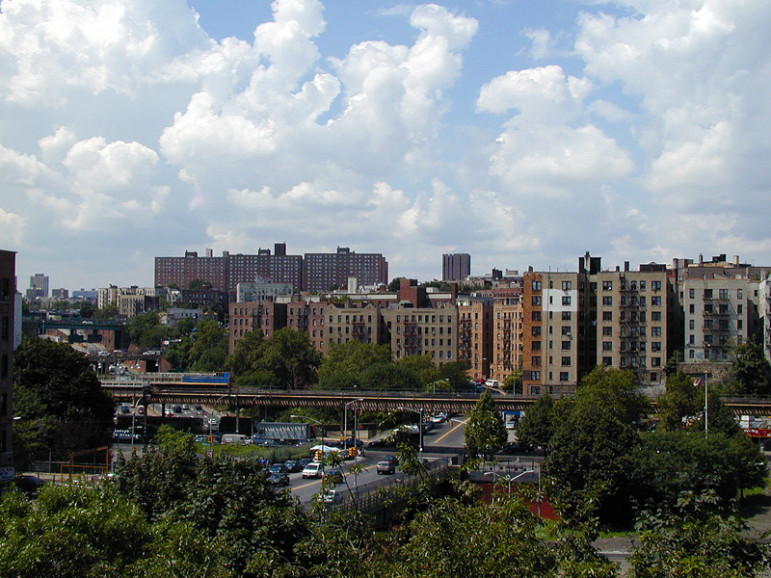
WikiUser718
The Bronx (above,) Brooklyn and Queens are the boroughs where crowding is a real issue.
Comptroller Scott Stringer is out with a report on the state of crowding in New York City housing. In some ways, it’s a different slice of a familiar apple: The city has a housing crisis and it’s affecting health, public safety and more.
But thinking of the housing crunch in terms of crowding brings a visceral dimension to the discussion—and a historical one, too. Overcrowding reminds one of the truly bad old days: “There came a time when the discomfort and crowding below were so great, and the consequent upheavals so violent, that it was no longer an easy thing to do” to ignore the problem, wrote Jacob Riis in the introduction to 1890’s How the Other Half Lives. “In New York, the youngest of the world’s great cities, that time came later than elsewhere, because the crowding had not been so great. There were those who believed that it would never come; but their hopes were vain.”
Here are five key takeaways from Stringer’s report:
1) The number of studio apartments increased 45 percent from 2005 to 2013, but the number of studio apartments with three or more people living in them jumped by 579 percent. Translation: A substantial increase in the supply of these apartments was mismatched with what the market needed (i.e., larger apartments) but likely couldn’t afford.
2) The median rent paid by people living in crowded apartments grew nearly five times faster than their median income, 12.8 percent versus 2.7 percent. In other words, it’s not just getting harder to afford a decent apartment in New York—it’s getting hard to afford an indecent one.
3) “Young adults and college students, while still a significant population within crowded dwellings, are not the primary catalyst of crowded living conditions in New York City.” Meaning: You can’t write this off as a transitory effect of that spunky young crowd of techies.
4) More than four out of five crowded households—and two thirds of severely crowded households—had a child in it, even though only 31 percent of city households include kids. On one hand, this stat is no great surprise: packing kids into an apartment that’s too small for them is a time-honored tradition. On the other hand, the degree to which children are affected by the problem is alarming. Where is a kid supposed to find space to study the Common Core?
5 ) Roughly one in eight Bronx apartments were overcrowded, a significantly higher share than in the other boroughs. This affirms the notion that low-income people have fled to the Bronx seeking refuge from higher rents, but suggests they are increasingly are doubling up rather than finding places of their own. That presents disturbing risks if any of the extensive, planned development in the Bronx creates displacement.
City Limits’ coverage of housing policy is supported by the Charles H. Revson Foundation.
* * * *









5 thoughts on “How Crowded is New York City? Five Disturbing Facts”
Stringer grandstanding again, meanwhile Stringer ignored all these issues when he was Borough President and an Assembly Member. He ignored constituents housing concerns for years.
Grandstanding, my eye. Don’t blame Stringer. While he was BP, what what did the Mayors what did the City Council, what did the legislature in Albany do?
Rent controls lead to tremendous misallocation of space. People stay in studios with kids because they can’t get 2-bedrooms, many of which are occupied by empty-nesters paying *less* than the family in the studio.
Grossly unfair, but Stringer prevented all attempts at reform during his time in office.
DeBlasio doesn’t care about the Middle Class
and the worst part this moron mayor and his zero tolerance policies are
taking away good parking spaces all over queens by extending the
sidewalks when no one uses them………stupid waste of taxpayers money